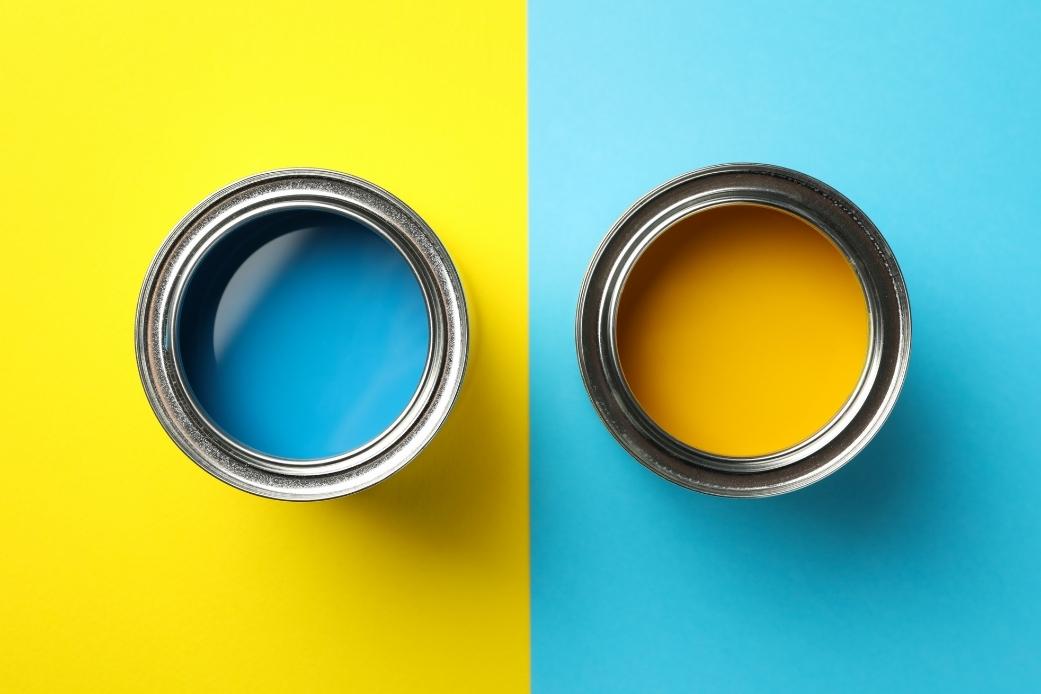Choosing the right type of paint can make or break the success of your project. Two major categories dominate the market: water-based paints and solvent-based paints. Each has its own set of characteristics, advantages, and drawbacks. Here's a breakdown to help you make an informed decision.
1. Composition
- Water-Based Paints: These use water as the primary carrier. Acrylic and latex paints fall under this category.
- Solvent-Based Paints: These use organic solvents (like mineral spirits) as the carrier.
2. Drying Time
- Water-Based Paints: Dry faster, usually within 1–2 hours. This makes them ideal for quick projects or spaces requiring minimal downtime.
- Solvent-Based Paints: Take longer to dry, often 6–24 hours, due to the slower evaporation of solvents. This extended drying time can allow for smoother finishes in some applications.
3. Environmental Impact
- Water-Based Paints: Eco-friendly, with lower volatile organic compound (VOC) emissions. They're less harmful to indoor air quality and easier to clean up with soap and water.
- Solvent-Based Paints: Higher VOC levels, which can contribute to indoor air pollution and environmental harm. Proper ventilation is crucial during application.
4. Durability
- Water-Based Paints: While highly durable, especially with advancements in modern formulations, they may not match the long-term resilience of solvent-based paints in extreme conditions.
- Solvent-Based Paints: Known for superior toughness and resistance to wear and tear, making them ideal for high-traffic areas or outdoor projects exposed to harsh weather.
5. Application and Finish
- Water-Based Paints: Easier to work with, especially for DIY enthusiasts. They tend to dry with a less glossy finish, but high-quality water-based options can achieve similar effects to solvent-based paints.
- Solvent-Based Paints: Provide a smoother, glossier finish that’s often preferred for trim, furniture, and metallic surfaces.
6. Cleanup
- Water-Based Paints: Simple to clean; tools and spills can be washed with water.
- Solvent-Based Paints: Require chemical solvents (like turpentine or paint thinner) for cleanup, adding extra cost and effort.
7. Cost
- Water-Based Paints: Typically more affordable due to easier manufacturing and lower environmental regulations.
- Solvent-Based Paints: Often more expensive, reflecting their durability and specific applications.
8. Best Uses
- Water-Based Paints:
- Interior walls and ceilings
- Areas with frequent moisture, like bathrooms and kitchens (when using mildew-resistant formulas)
- Spaces requiring low odor and quick drying
- Solvent-Based Paints:
- Woodwork, trim, and furniture
- Metal surfaces or outdoor projects
- High-traffic areas needing extra protection
Conclusion
Your choice between water-based and solvent-based paints should depend on your project's specific needs. For eco-conscious, indoor applications or when time is of the essence, water-based paints are the go-to. However, for maximum durability, shine, or outdoor resilience, solvent-based paints might be the better option.
By weighing the pros and cons of each type, you can ensure a professional finish that meets both your aesthetic and practical requirements.

Comments
Post a Comment